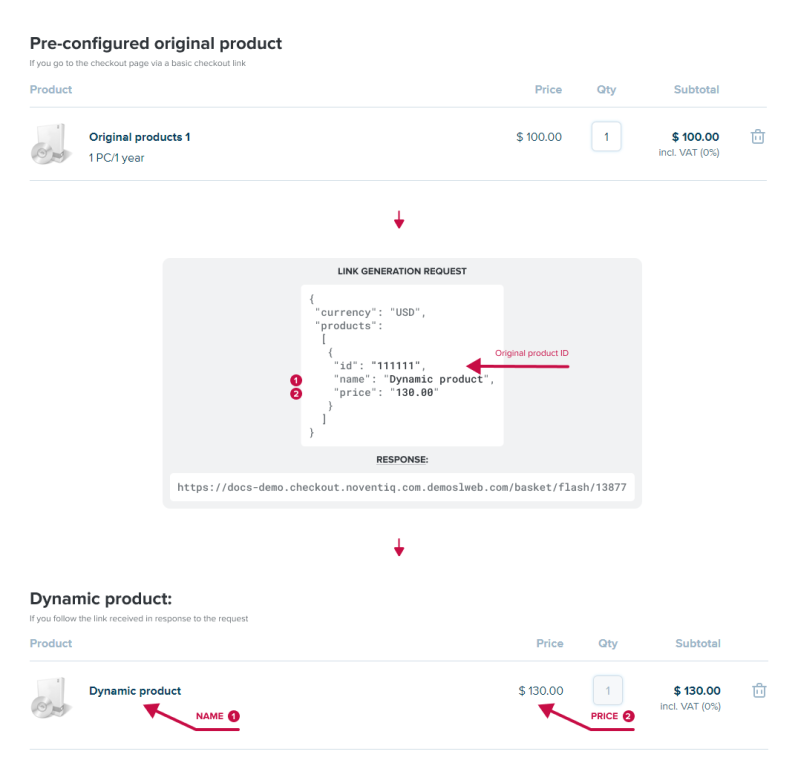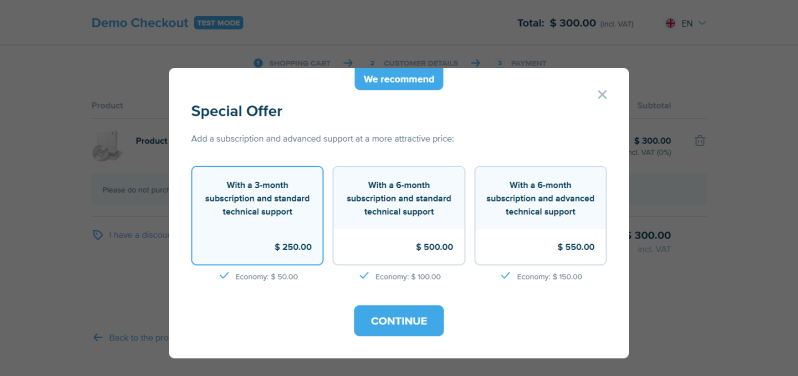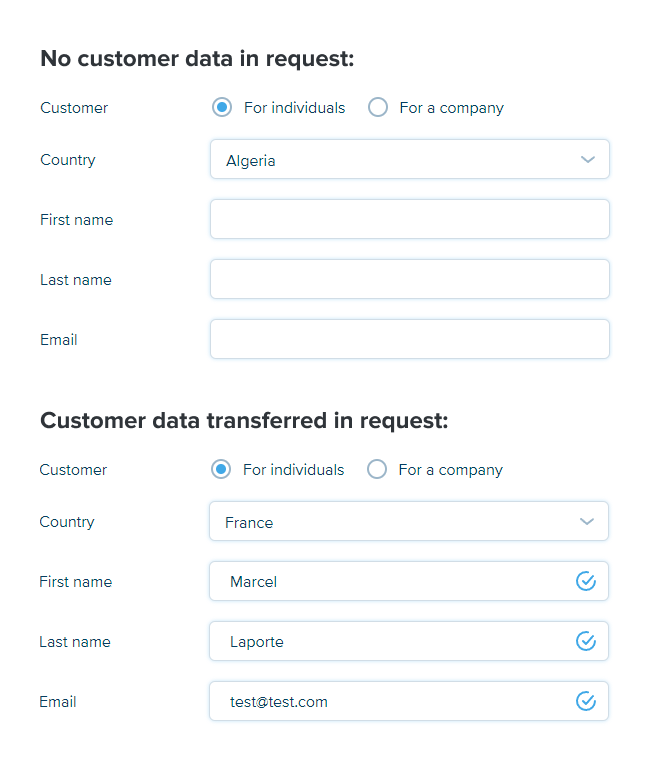Dynamic Product Checkout API
Overview
Using this API, you can add products to your checkout page without having to create each product separately in the catalog on our end. The API generates checkout links allowing to purchase the products the properties of which you transfer in a request.
Wherein:
- Some of the product properties (e.g.: name, price) are taken from the request to the API
- The other part of the properties is taken from the original product that is pre-configured in your catalog on our end.
Hereinafter, such products are called dynamic products or products with dynamic information.
Based on one original product that has been pre-configured on our end you can create an unlimited number of checkout links that will differ in name, price, etc.
Note!
- The link generated via the API is one-time only; you can use it to place only one order
- Purchase of a dynamic product differs from a regular purchase, more details
The API also allows you to:
- Use auto-renewable subscriptions (show or hide subscriptions on checkout pages, manage subscription properties in requests)
- Display up-sell offers on checkout pages to replace one product with another
- Prefill customer data required for making a purchase
- Manage additional order parameters (the order properties that are hidden from the customer but can be used in the future)
How It Work
- First, you configure one or more original products on our end. Several products may be needed if:
- You want to add more than one product to your checkout page
- Your products have different images or descriptions, taxation, shipping
- When using auto-renewable subscriptions, the renewal term differs
- See the full list of settings that are taken from the original product
- The customer selects a product on your end and initiates a purchase
- You send us a request transferring the following:
- The list of products that should be added to the checkout page and offered as an up-sell (optional). For each of them you transfer a name, a price, an ID of the original product and other properties
- Customer data (optional).
If the data has been transferred, there is no need for the customer to fill it in on your checkout page to place an order. They can see the already pre-filled fields and edit them.
- In response, the API returns a checkout link that must redirect your customer
- The customer follows the link to the checkout page:
- They see the products the data of which you have already transferred in the request
- At the second step of the purchase, they must see that their data has been pre-filled in the form fields (if you have transferred them in the request)
- Next, the customer can place their order.
Use Cases
- Products with a choice of configurations
For example, your website has a “calculator” that allows your customer to configure a set of product features and calculate its price. If there are quite a lot of such properties, it is faster to receive a checkout link via the API than to create products in the catalog for each possible combination of properties. - Frequent changes in product properties
Use the API if it is more convenient for you to change product properties on the fly, rather than in the catalog on our end. - Restriction on product purchase
For example, a product can only be purchased if the purchaser has the correct serial number for a previous product license. In this case, you request the serial number from the customer on your end and check its correctness. If the condition is met, create a one-time checkout link through the API. Thus, the customer will be able to place an order only if the condition is met, and only one order. - Special conditions for customers
For example, a special price for a product or a special package, pre-filling of customer data on a checkout page. - Up-sell offer
For example, your customers often choose non-subscription products, and you want to motivate them to buy auto-renewable products. Show them an up-sell on their checkout page and offer to replace their non-subscription product with a more profitable one.





